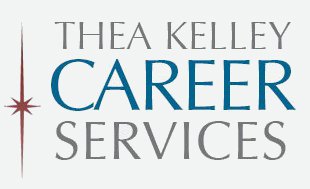 If you’re graduating from high school or college, you probably have limited experience, and you may not have many big accomplishments to brag about. How can you write a fresher resume (a resume as a recent graduate) that stands out and gets interviews?
If you’re graduating from high school or college, you probably have limited experience, and you may not have many big accomplishments to brag about. How can you write a fresher resume (a resume as a recent graduate) that stands out and gets interviews?
Understand what makes you special.
Is there something about your skills or experience that’s above average? If so, find ways to communicate that, either in your Experience section (by including accomplishments), in Skills, or perhaps in a brief introduction at the top.
If you aren’t sure what stands out about you, ask yourself these 10 Questions.
Don’t just claim it, prove it.
If you’re above average in some relevant area, don’t expect the reader to simply believe your claim of “exceptional communication skills” or anything else. Find a way to provide evidence. For example, if you have work experience, you may be able to describe measurable accomplishments or provide links to work samples. Otherwise, provide social proof by quoting from LinkedIn recommendations or other kudos. Read my post, Social Proof: A Job Seeker’s Secret Weapon. If the advice in that post seems unusual to you, that’s because it is. These are advanced and under-utilized techniques that can put your resume way above the competition.
Target your resume to a specific type of job.
Do you know what type of job you’re seeking? Can you name one or more closely related job titles you’re aiming for? If not, use resources like your school’s employment counselors, job search books, websites like CareerOneStop, and informational interviews to clarify your career goal. It doesn’t have to be a lifetime commitment; most people change careers a few times.
Emphasize the transferability of any experience you have, even if it seems unrelated to your goals. Let’s say you worked as a barista or warehouse worker. As long as you held the job for a substantial amount of time—and six months can be a respectable tenure in some types of jobs—the experience can demonstrate, at the very least, that you’re able to consistently show up, follow instructions, learn, and get the job done.
How you describe that experience depends on what job you’re aiming at. Let’s say Mike and Stephanie both waited tables at a restaurant. Stephanie is planning to apply for sales jobs, and Mike is planning to apply for tech support roles. They’ll each describe their restaurant experience a bit differently.
- As a future sales rep, Stephanie should emphasize her success in encouraging customers to order more food and drinks, for example, “Consistently in top 10% of wait staff for upselling desserts and drinks.”
- To show skills transferable to tech support, Mike should emphasize teamwork, communication and problem-solving skills, such as being patient and empathetic with a customer who is upset because something’s wrong with their order. (Come to think of it, Stephanie could include this, too.)
Do you have internships and volunteer work as well? You can put paid and unpaid work in different categories (“Professional Experience” and “Volunteer Experience”), or try putting all the work in one section headed simply “Experience.” See which way looks best. If you do include volunteer work under “Experience,” be honest and use the word “volunteer” in the job title or description.
Use care in including short-term work.
As a recent graduate, you may have had jobs that only lasted a short time. If those were internships or temporary jobs, identify them as such, so your prospective employer can see that the short time wasn’t due to a problem.
On the other hand, if a role was intended to be permanent but you quit or were let go after only a few months, should you include it? If you include it, you’re likely to be asked why you left after only three months. Can you give an answer that’s honest and also makes you look good?
What if you have no work experience?
You can write a compelling resume that focuses entirely on your schooling. However, in most cases it’s wise to seek internships and/or volunteer opportunities as soon as possible.
Write an effective education section.
Your education section should include any college studies, whether completed or in progress. Include the name of the school, city and state in which it’s located, and the month and year that you graduated or expect to graduate. You can use bullets under that to highlight any honors, extracurriculars, relevant coursework (especially if certain courses are more relevant than the title of your degree) and/or relevant major projects.
If you’ve attended college (even if you haven’t graduated), there’s usually no need to include mention of high school. However, if your grades and/or extracurriculars were exceptional, such as a GPA of 3.8/4 or being captain of a team, it may be useful to include it.
Include your GPA only if it’s at least 3.5 on a 4-point scale.
Make your resume ATS-friendly.
In some cases, your resume may never be read by a human being if it doesn’t perform well electronically, in the company’s applicant tracking system (ATS). Read my post, Robot-proof Your Resume If You Want to Get Interviews.
Think of AI as a first-draft tool at most.
AI resume-building tools can help you get past the “blank page” mental block. But remember, AI makes plenty of mistakes. AI-generated resumes may not be ATS-friendly, or may contain grammatical errors or awkward phrasing and other problems. Use your judgement, and also seek feedback from other human beings.
Appearance counts: tips about formatting.
While templates can look good, they also can contain hidden formatting that may cause problems in an Applicant Tracking System. Use resume templates as a source of ideas, then set up your resume in Microsoft Word. Avoid the overused Times New Roman font. Some of the best fonts for resumes are Calibri, Cambria, Gill Sans, Georgia, Tahoma, Trebuchet MS and Verdana.
Use the right font sizes. For the body of the resume, use a 12-point, 11.5-point or 11-point font size, or maybe 10.5 or 10 if you have a lot of information to fit on the page. (A fresher resume should usually be a single page, and certainly no longer than two pages.) For headings, use a font one or two points larger. Your name at the top of the page should be a few points larger than the headings. A good set of font sizes might be: 16pt or 18pt for your name, 13pt or 14pt for headings, and 12pt for the rest.
Question your proofreading skills.
Proofreading is harder than you think. Learn how to proofread perfectly, or better yet, hire a qualified professional.
What’s next?
Now that you know how to write a fresher resume, what’s your next step? You may want to learn how to use informational interviewing to get a job faster or prepare for successful interviews. If you haven’t already subscribed to this blog, that’s a smart next step, too. Keep learning, and get a great job sooner. (This post was originally published in 2022 and has been updated.)

